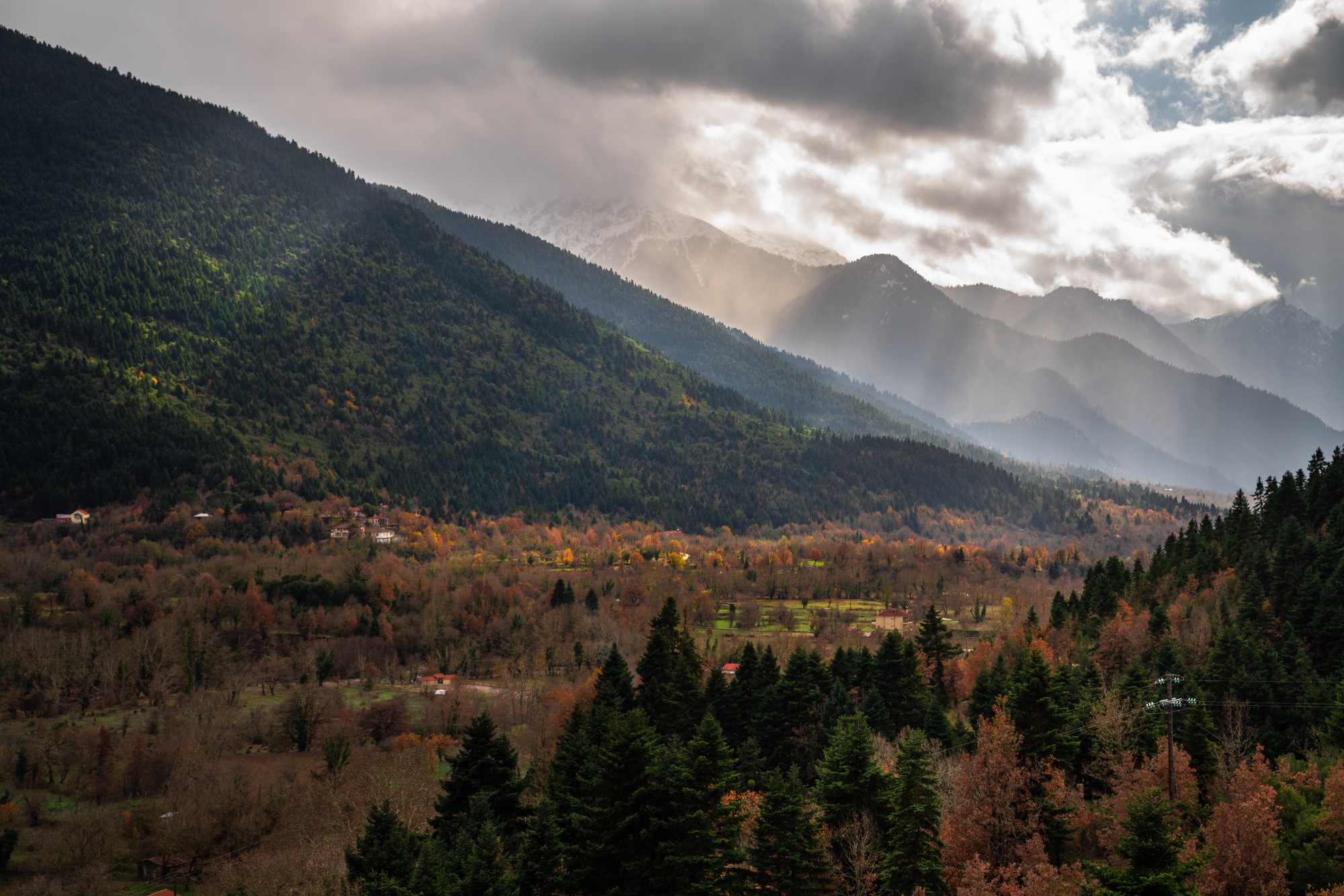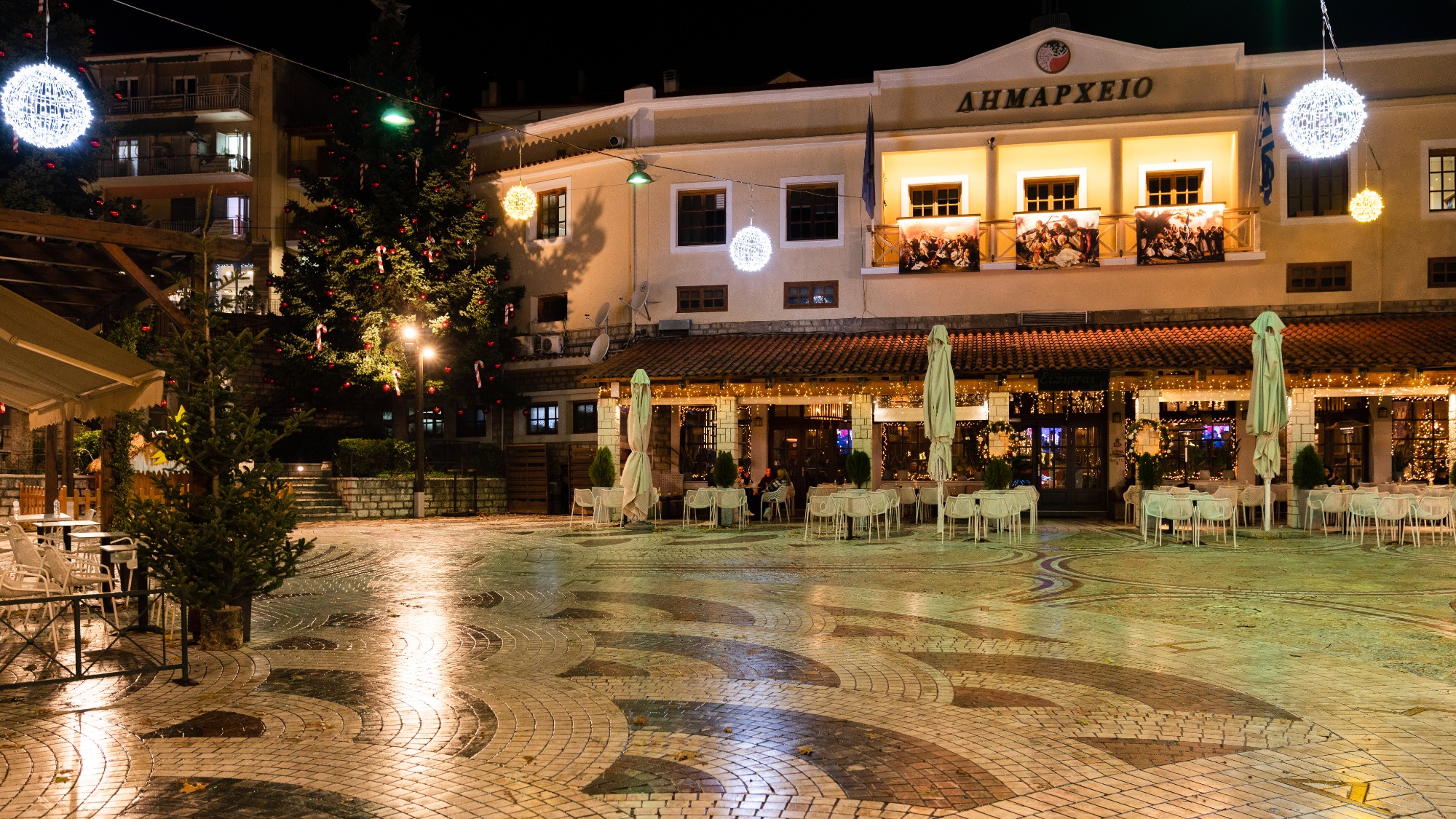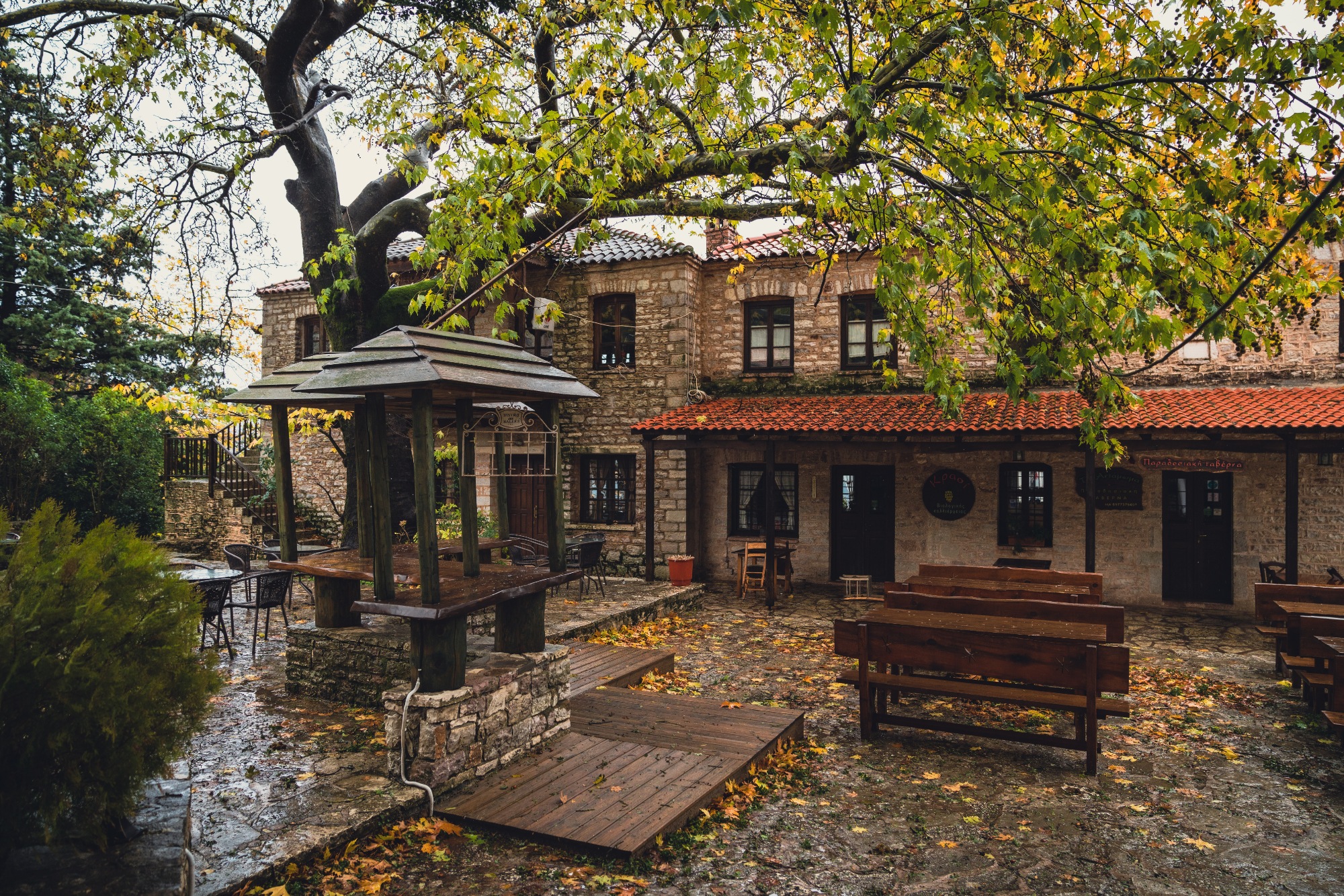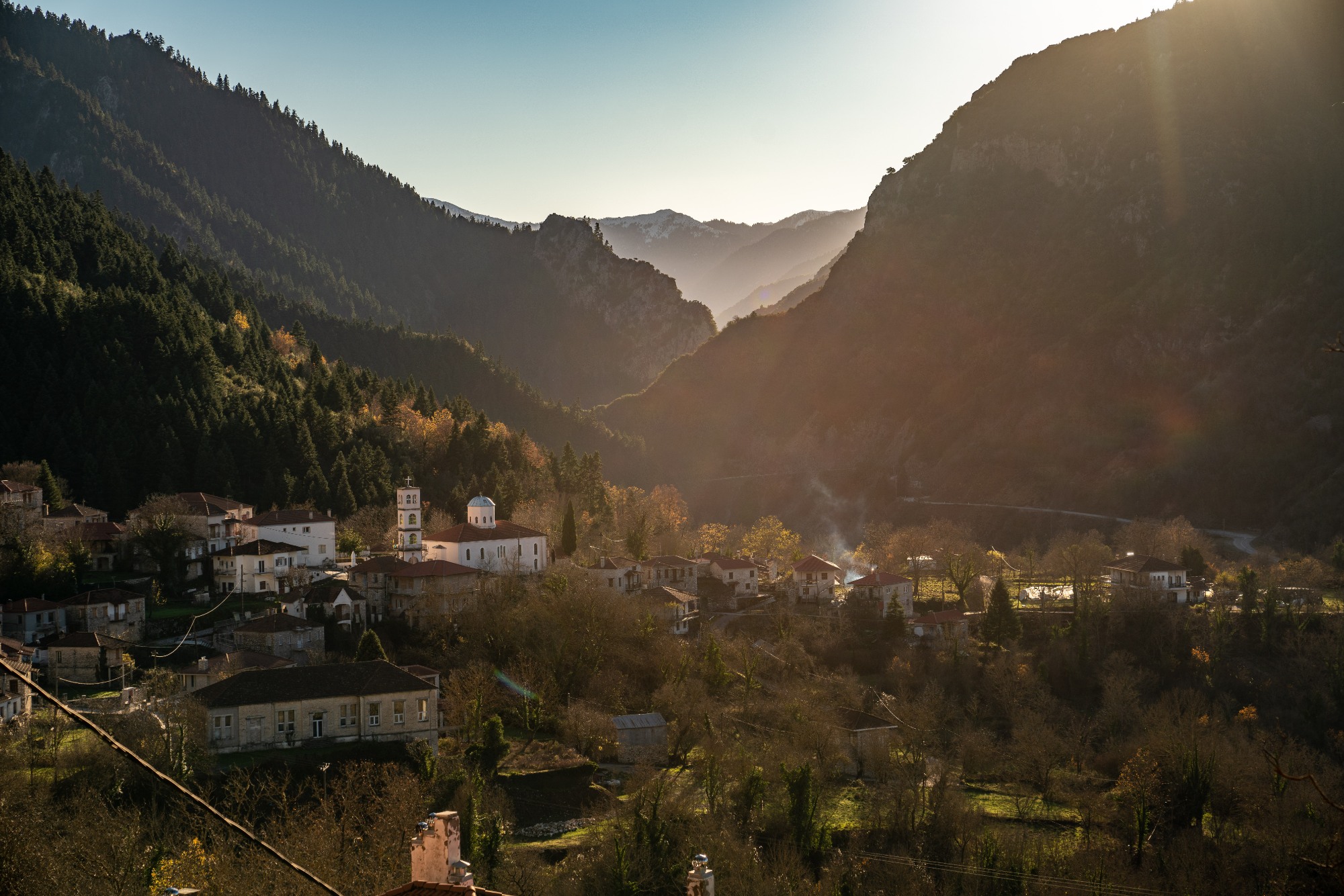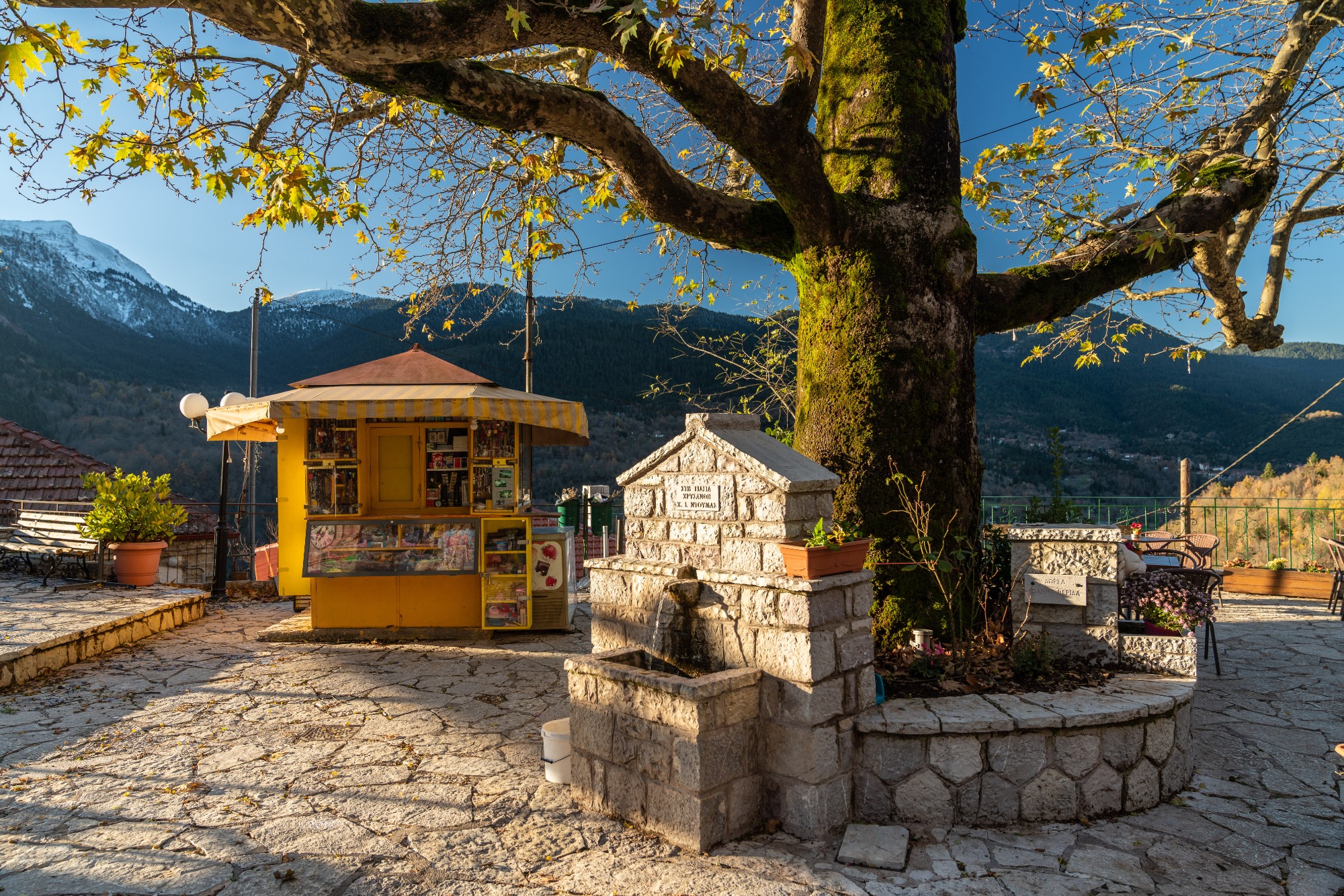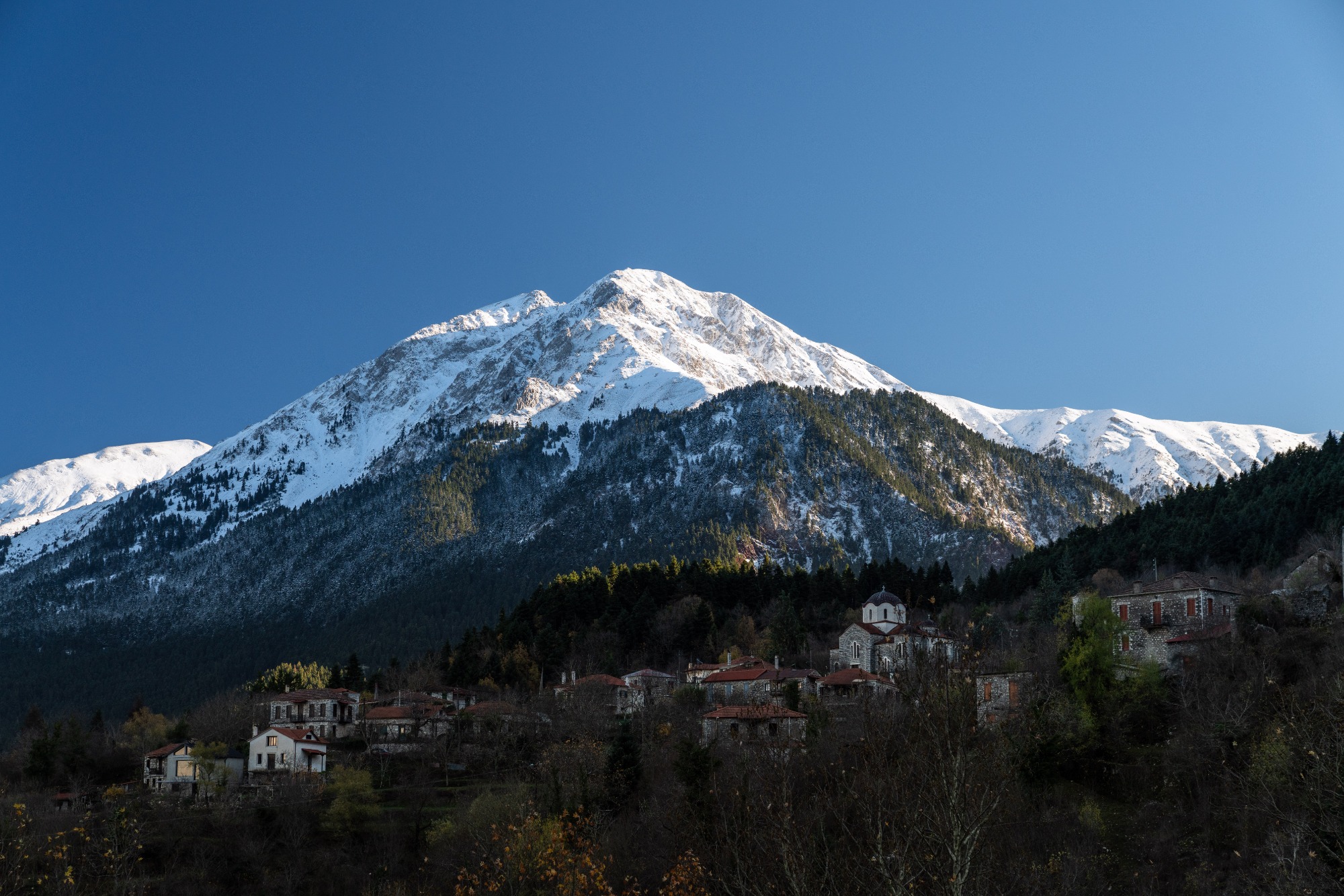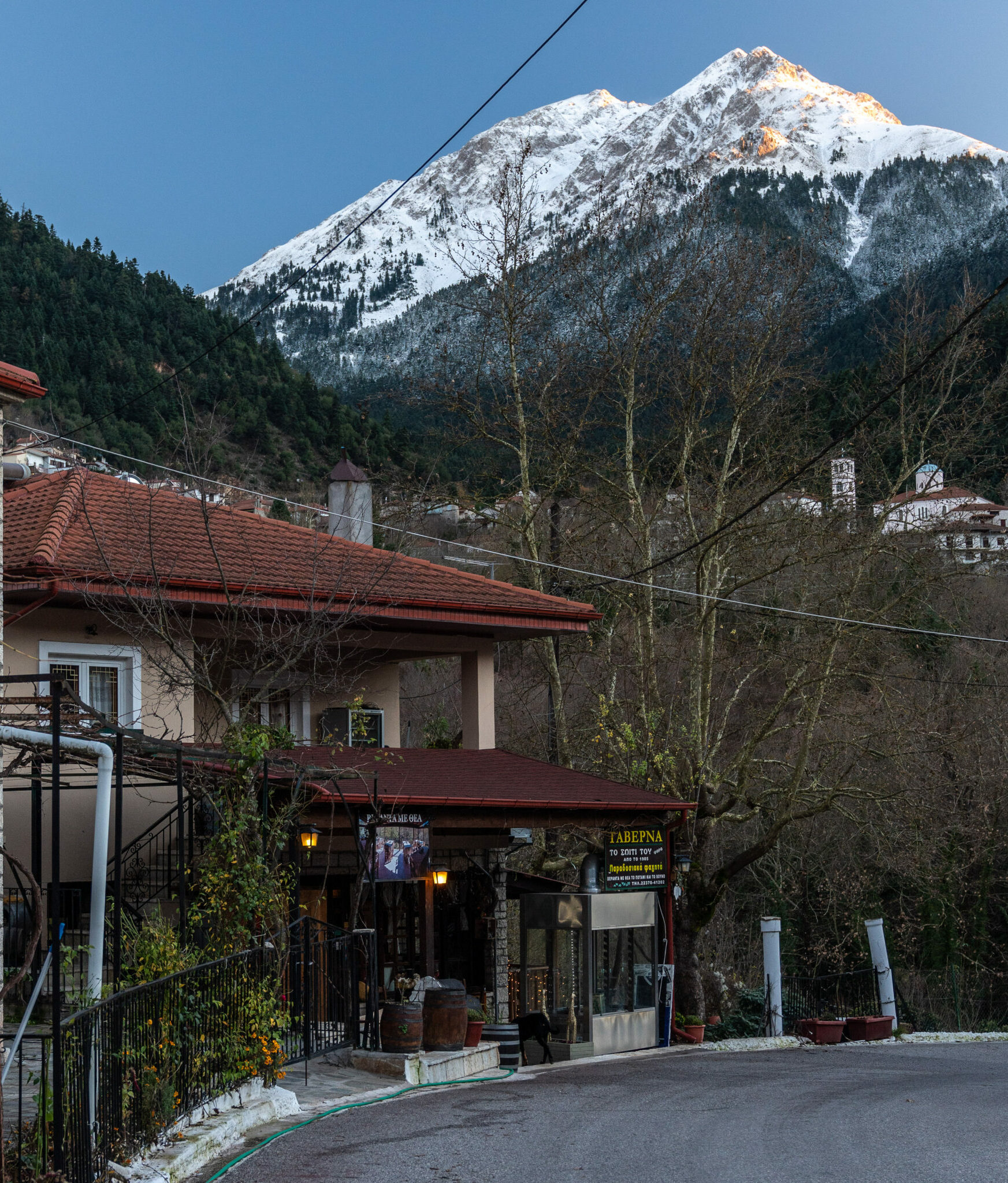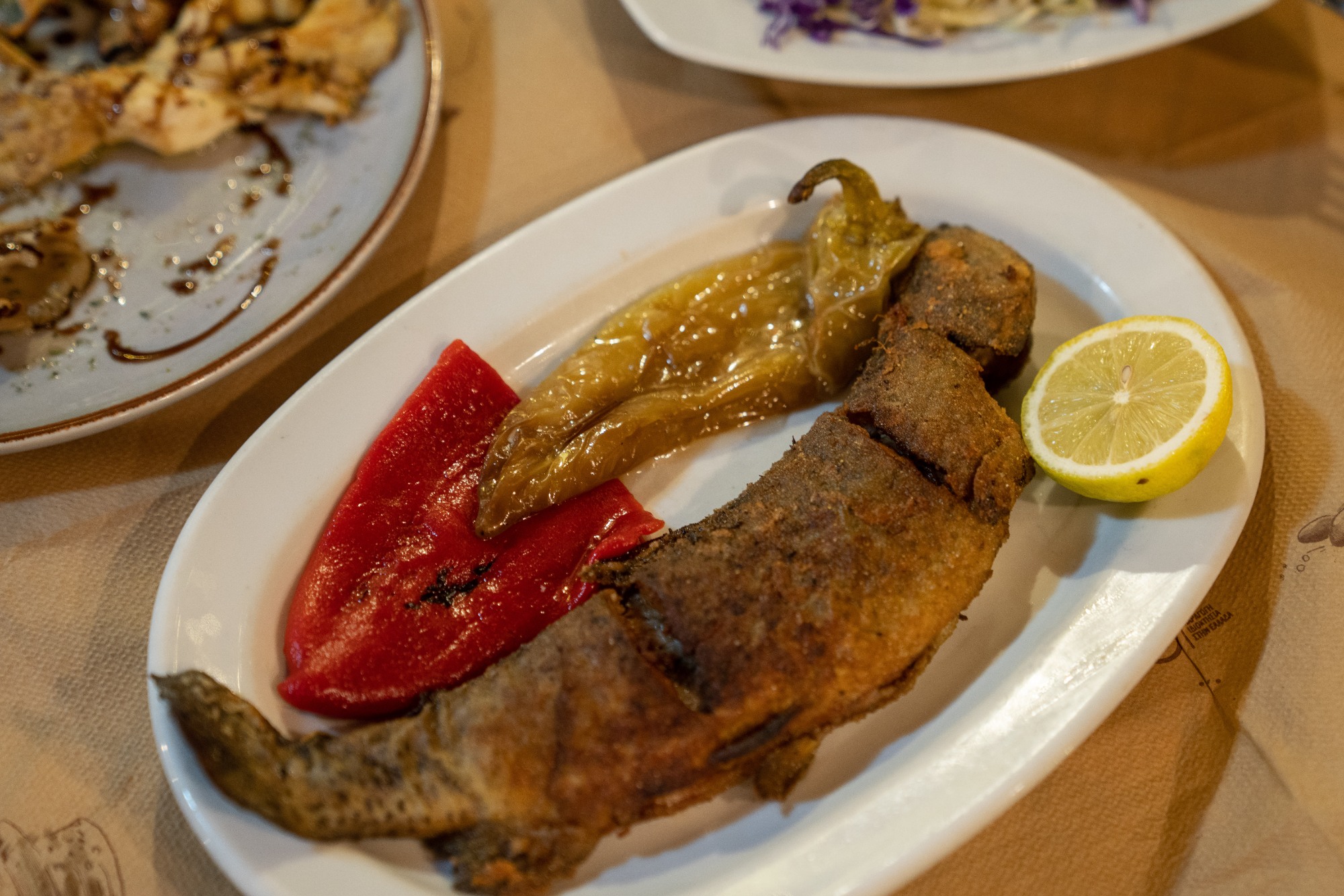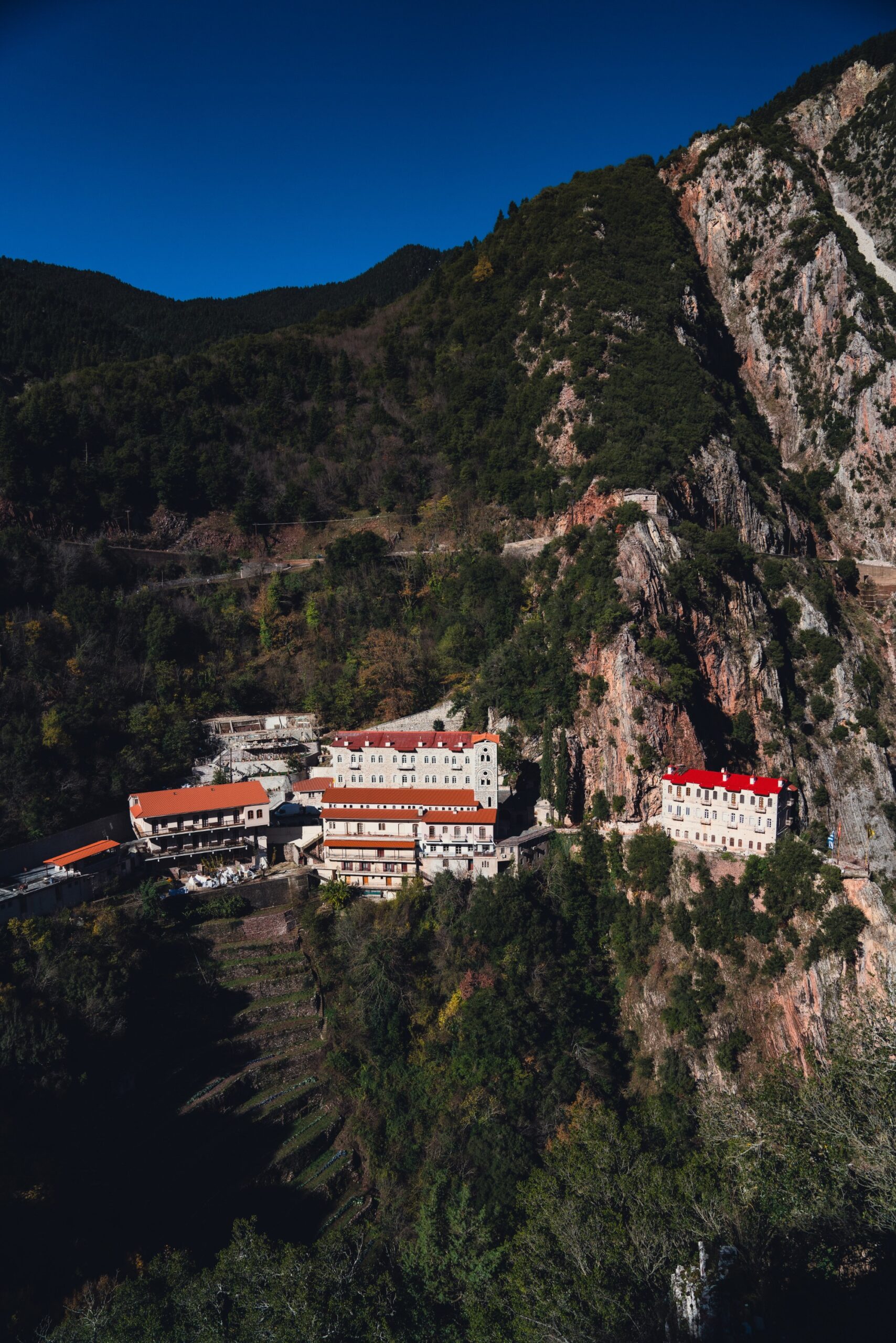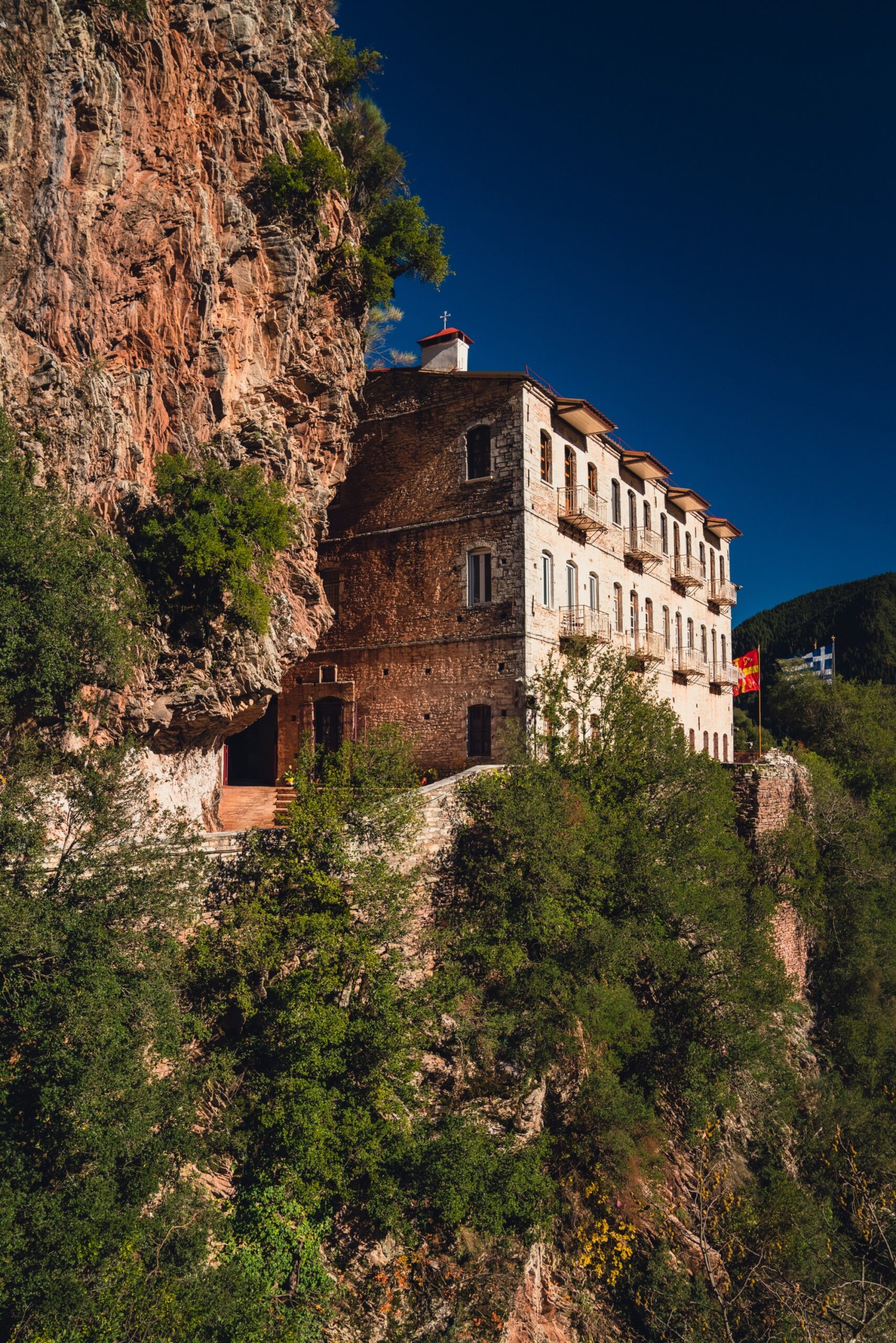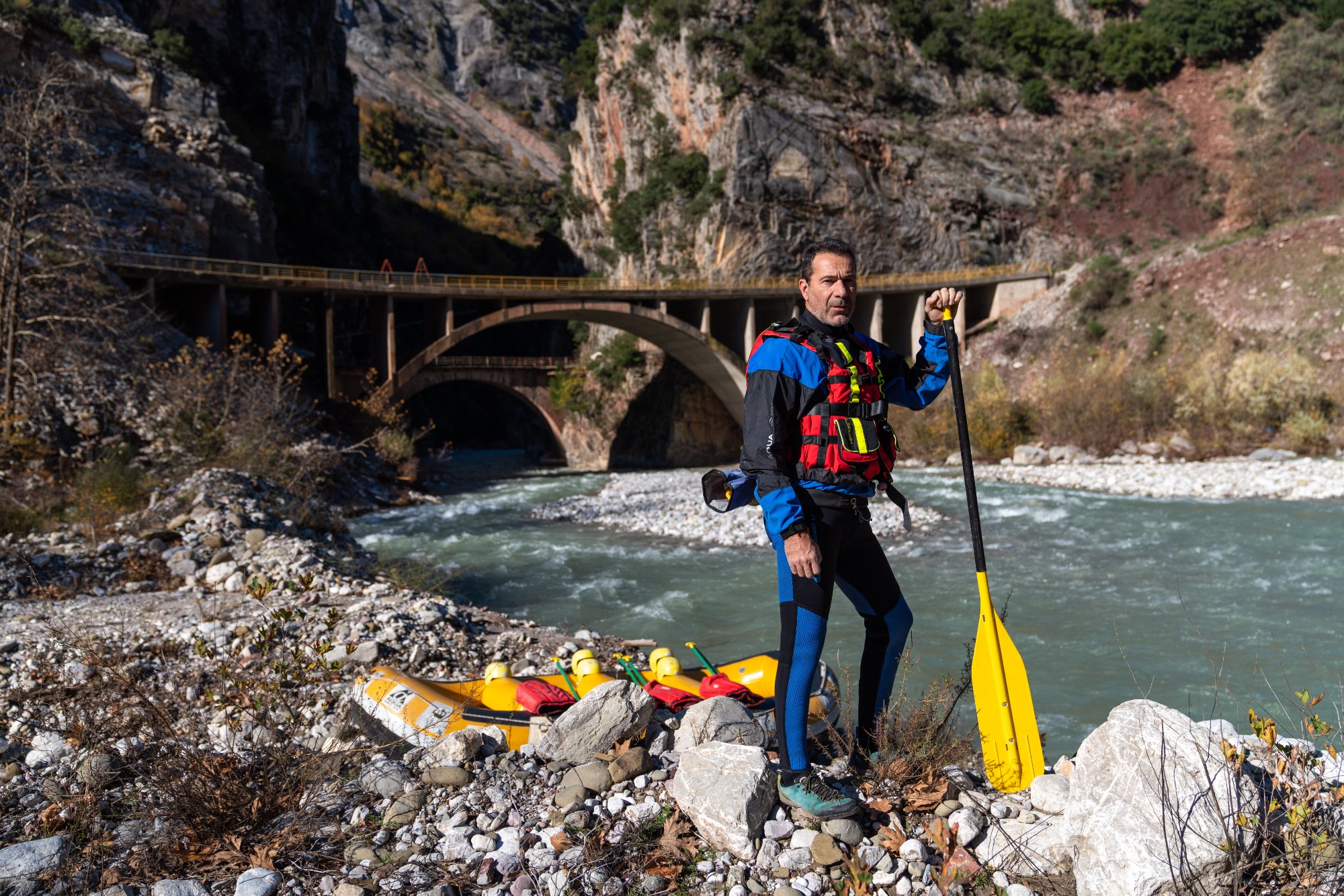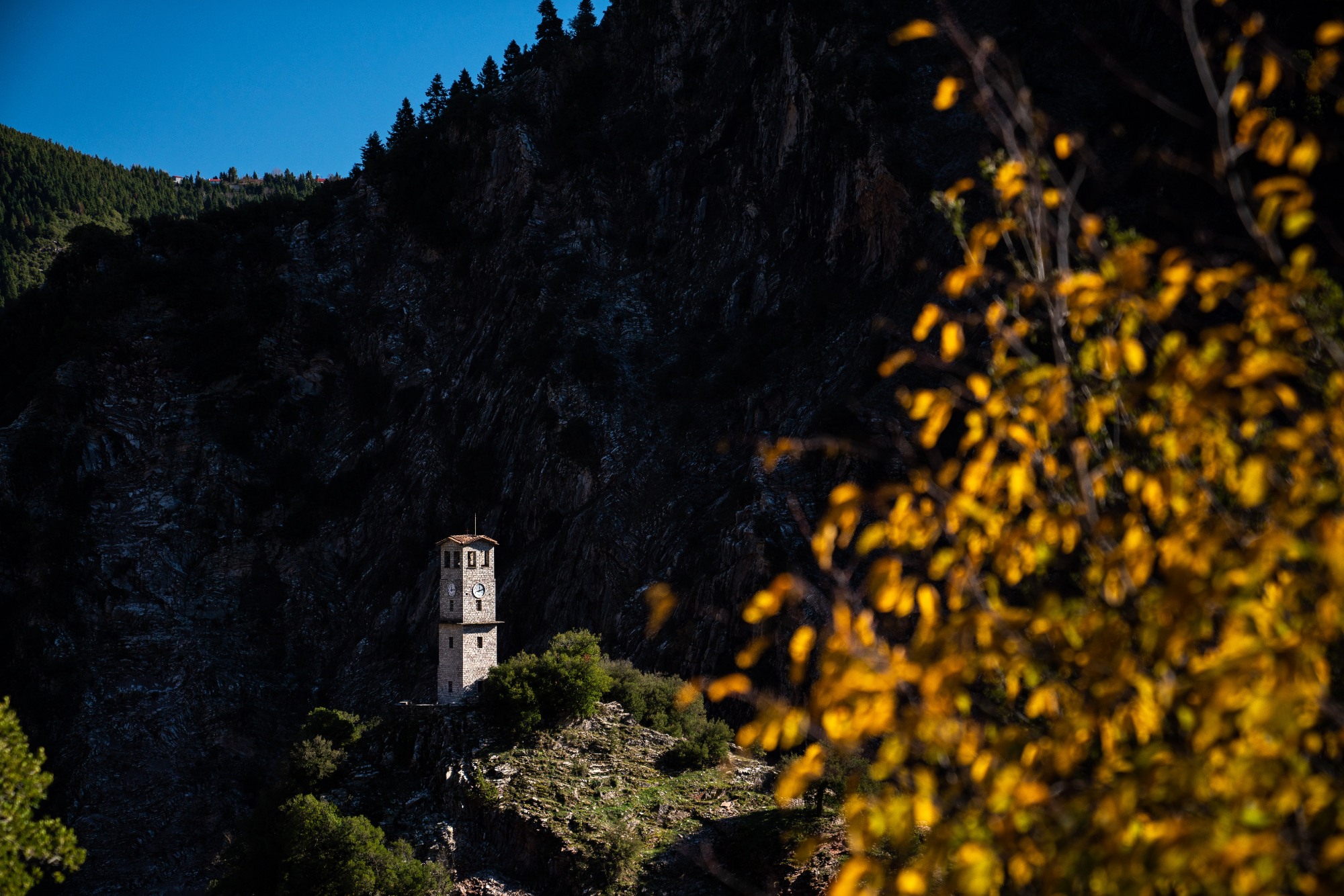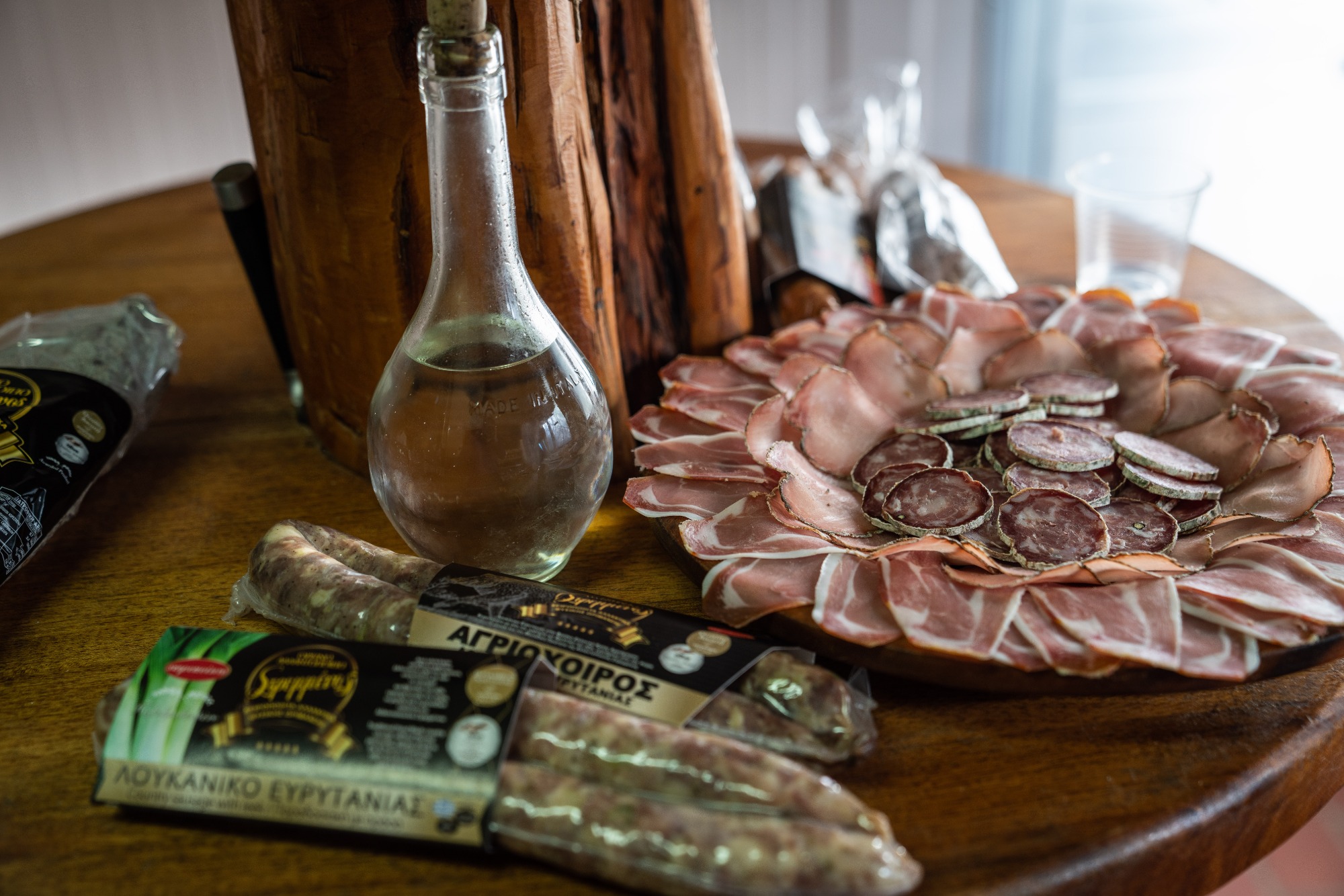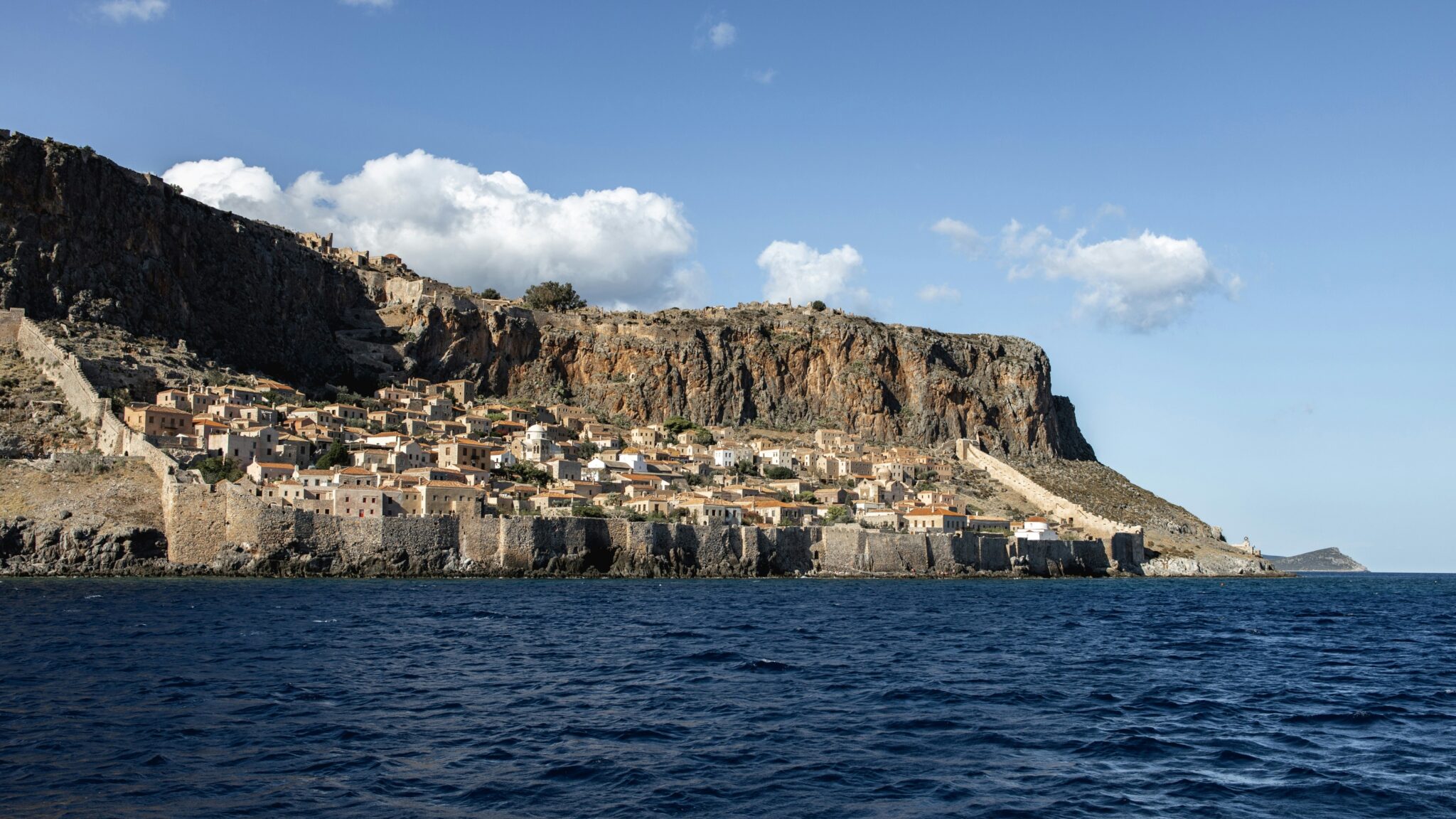The Evrytania region in central Greece is an imposing landscape of restless, forested slopes, fir trees, deep gorges, rivers surrounded by plane tree forests, steep and incredible landscapes.
The region’s people needed to tame this rugged, stone-dominated territory to make it inhabitable, utilising the stone to build houses, roads, paths and squares. Evrytania is like a perpetual exchange between the people who forged the area into shape and the grand overall setting.
Karpenisi, the region’s capital, is the starting point for a Mount Tymfristos route with lots of bends leading to the Velouhi ski resort, still not open for this winter season, or for an elevated view of the city and the Potamia area.
A road from Karpenisi also leads to the village Megalo Horio, the Proussos Monastery, and, from there, stunning Lake Kremasta, Greece’s largest artificial lake, via a relatively unknown route passing by Fragista, Viniani and Agios Georgios. Fidakia, a gorgeous village, and Krikelo, Evrytania’s southernmost village, should also be considered, amongst other options, from Karpenisi as the starting point.
Karpenisi, Koryschades and surrounding areas
Karpenisi is a friendly place with hospitable character and a big square, Markos Botsaris, hosting a centuries-old plane tree, pedestrianised streets and a series of appealing café-bars, ideal for a drink and music at night. A sign placed at the square by the municipality declares Karpenisi is a location of authentic living, which is a very true.
Visiting the exceptional Evrytania Cultural History Centre (+30 22370 80217, kipe.gr) is a must. Interactive and fully equipped with state-of-the-art digital means, this museum immerses visitors into the history of the land, stretching from prehistoric times to the modern era.
Koryschades, situated just a few kilometres beyond Karpenisi, has preserved most of its traditional stone character. The National Resistance Museum, currently without its collection of photographs by emblematic Greek Resistance photographer Spyros Meletzis, still remains filled with memories of the struggle by Greek fighters during World War II.
The big square with the restaurant-café, open all year round, as well as unique guesthouses and the Agios Athanasios church, create a setting that reminds of the atmospheric films of the late award-winning director Theo Angelopoulos.
The route covered by the Karpenisiotis river, crossing the Potamia valley between the Kaliakouda and Helidona mountains, is one of the country’s most scenic. The village Megalo Horio, on the slopes of Mount Kaliakouda, faces Neo Mikro Horio and Palio (Old) Mikro Horio at the opposite Mount Helidona slope. Gavros, situated by the river, hosts trout farms.
A number of smaller villages, each possessing individual charm, such as Klafsi, aka Klapsi, as well as Voutyro, Nostimo and Mouzilo, can be reached by taking turns off the main road heading towards Megalo and Mikro Horio. These villages are more compact, quieter and possess the classic combination of stone-paved square with church, plane tree, lovely taverna and hospitable kafeneio, or traditional café.
On the slopes of Mount Kaliakouda, Megalo Horio, meaning big village, is the most popular village choice for tourists visiting the wider Evrytania region. Megalo Horio is big in terms of choices offered, along with Gavros. Otherwise, it is a small place that can be walked from top to bottom in twenty minutes. Megalo Horio has resisted architectural alterations to satisfactory degree, offering classic plane-tree beauty upon entry, an old-style yellow kiosk from the 50s, as well as houses rising like towers at the village slope. A cobbled path runs behind the houses. It gradually transforms into a village wall.
A trail beginning from Megalo Horio’s parking area leads towards Kefalyvryso and a ravine with small bridges for a setting of running waters, greenery and a magical forest, all just metres away from the main road.
The special galaktoboureko (semolina custard baked in filo) at Galaktoboureko Tou Karveli (+30 2237041339), with a terrace and windows facing the slopes opposite the village, is highly recommended. So, too, is Kentriko (+30 2237041263), a workshop selling a wide variety of sweet preserves, marmalades, including carrot-orange, apricot and chestnut flavours, as well as liqueurs and pasta, all produced by the Evrytania women’s cooperative (+30 2237041263). Ergastirio Karipis (+30 2237041265) is another workshop selling sweet preserves, marmalades, pasta, as well as kitchen utensils. All these shops are on the main road in the Megalo Horio area, offering a compact feeling of abundance. Visitors can always expect to find two or three shops here during weekdays.
The Folklore Museum (+30 2237041502), offering replica settings of older professions, including a shoemaker’s corner with authentic work uniforms, tools and equipment, as well as, on display, the impressive mechanism of the old village clock, from 1926, will take you back to a bygone era. Call to check if the museum is open before visiting.
In Gavros, a succession of tavernas are situated side by side on the main road. Trout is a main menu item at all these eateries, which is no surprise given the abundance of local trout farms. One of these, Fresko (+30 2237041215 / +30 6972915084) is open to the public for tours of the facility, tasting of trout-based recipes, shopping as well as a cup of coffee.
At the opposite side of Mount Helidona, Neo Mikro Horio and Palio (old) Mikro Horio, resulting from a landslide in 1963 that split the village Mikro Horio into two, each have their special qualities. Both are quieter than the aforementioned villages. Palio Mikro Horio offers greater charm as it has retained many authentic architectural features. It features an old village tap with a large plane tree, while, prior to the village entrance, a short trail, less than 100 metres long, leads to plane trees and a small seasonal lake formed in the late-autumn and winter months. The two villages offer tavernas with good food, fireplaces and wonderful surrounding nature.
Proussos Monastery
Heading towards the spectacular Proussos Monastery, the Potamia valley gives way to a deep gorge. The road narrows and, at a bend, reveals Kleidi, a much-photographed towering rock over the road, dug out at the bottom for the road to pass. It is a marvellous complementary feature to the overall setting of snowcapped mountains.
The rugged setting is softened by the sound and view of water while passing by Dipotama, the point where the Karpenisiotis river merges with the Krikellopotamos river to form the Trikeriotis river. Small amounts of rain make this stream ideal for rafting, from autumn to spring. Heavier rainfall creates treacherous conditions that do not enable contact with the water. In this event, enjoy observing the water flow through the arched bridges. From this area, an easy trail leads to Mavri Spilia as well as a renowned gorge, Panta Vrehi, accessed between spring to autumn. For rafting, trekking, horse riding and cycling in the area contact Trekking Hellas (+30 2237025940). Bookings with the company are required a week in advance.
The Proussos Monastery, a key place of pilgrimage, is a large compound built up against the gorge’s towering rocks. According to historical accounts, two monks, Dionysios and Timotheos, established a shrine at this location in the 10th century and lit a torch that burned continuously. The torch (pyrsos) gave the monastery its initial name, as the Pyrsos monastery, when it was built at this location in the 12th century. Over the centuries, the monastery underwent a series of name revisions that settled with its current name in 1845, when the nearby village was also renamed Proussos.
Worshippers are drawn to the monastery’s chapel, built inside a cave as a place of refuge for an icon of the Virgin Mary. According to tradition, this miracle-working icon reached the location in 829 AD from the Panagia Prousiotissa monastery in Proussa, Asia Minor, during the Iconoclastic Controversy, a dispute over the use of religious images in the Byzantine Empire during the 8th and 9th centuries. The icon is believed to have been painted by St. Luke the Evangelist. The murals are superb and the atmosphere is profoundly divine. Beyond the Panagia Prousiotissa monastery, further up, on a hill, a clock tower, Roloi, offers the ultimate view in the area.
Before heading back down towards the monastery, an accessible trail runs through dense nature, over small bridges, and under the road to reach a renowned charcuterie workshop, Stremmenos (+30 2237080810). Visitors may taste aged charcuterie produced at this facility, with a glass of local tsipouro, and also buy goods.
Visitors may also sit at a kiosk alongside a small river running by the charcuterie facility for relaxation to the sound of running water and view of falling yellow plane tree leaves. Indeed, as was noted earlier, Evrytania is a location of authentic living.



